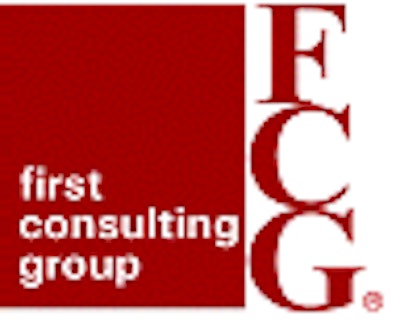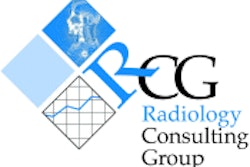
First Consulting Group

Management knew it could justify the immediate expenditure needed to stabilize the system, but it also knew it couldn't afford to be in this position again without risking end-user confidence and usage. How could it plan ahead to avoid this situation again in the future? The facility solved the problem by planning and budgeting for PACS reinvestment.
Executives and managers often believe that PACS is a one-time purchase that will meet the organization’s needs for many years to come. Unfortunately, this belief will often be challenged within a few months of system acceptance. Continual reinvestment in PACS is crucial for maintaining maximum efficiencies, and for realizing the expected operational savings and efficiencies.
The need for PACS reinvestment
PACS technology is constantly changing: more robust features and functionality are continually being developed, software changes fix known bugs, and hardware changes allow for greater system performance. New solutions are developed to meet changing business needs and technology requirements.
Reinvestment is required to meet the increasing demands placed on the system, which include higher exam volumes, increasing images per exam (especially with CT and MR), growth of the organization and radiology practice, changing vendor hardware or software platforms, the addition of new modalities, changes to supporting clinical systems (such as RIS, HIS, and scheduling systems), changing storage solutions, and changes to the facility.
PACS reinvestment should address the business requirements of the organization. All reinvestments in the PACS should directly tie to a business need. Further, to operate a successful PACS and continually meet the imaging services needs, consistent reinvestment is required to keep the PACS operating efficiently.
PACS vendors regularly develop new functionality and solution enhancements to meet changing business and operational needs of users. Vendors typically release these system enhancements in the form of new system software every six months or so. Although users are not required to purchase the additional features and functionality, many customers will have business requirements that support the additional investment in the PACs.
There are three terms vendors use for defining changes to the PACS:
- Enhancement -- a software change used to repair known issues with the software source code. Enhancements are typically offered at no cost to the customer and usually require no hardware modifications. Vendors typically release software enhancements as issues are identified and code to fix them is created.
- Updates -- a software change to provide additional features and functionality and that may also repair known software anomalies. An example of an update is going from version 1.1 to version 1.2 of the software code. Updates typically are offered at an additional cost to customers. Most vendors release updates on a six-month timeframe.
- Upgrades -- Software or hardware changes intended to provide major features and functionality improvement. Such changes may include a new hardware platform or system architecture change. These changes typically result in marked improvements in system performance and usability. Upgrades may require new hardware and software, and most likely require the customer to shut down the system so the upgrade can be made. Depending on the scope of the change, the system can be down from a couple of hours to a few days. An example of an upgrade is going from version 1.2 to version 2.1. Upgrades can require new hardware such as a database server, workflow engine, archive (both near-term and long-term storage), and workstations. Upgrades are the most expensive and the cost is normally passed on to the customer. Most vendors choose to release upgrades on a three-year timeframe.
|
New PACS Software |
||||
|
Item |
Frequency |
Cost |
Operational impact |
Organizational benefit |
|
Enhancement |
3 months |
No cost |
Minimal to none |
Small |
|
Update |
6 months |
Moderate |
Limited or moderate |
Small or medium |
|
Upgrade |
3 years |
High |
Moderate |
Medium or large |
Update and upgrade decisions should be made by considering organizational needs, and the current performance of the PACS network. It isn't necessary to invest in every update or upgrade the vendor offers. All reinvestments should be tied to a business need and should support the need for maintaining system stabilization, process or organizational improvements, expansion, or avoidance of technology obsolescence.
Where to reinvest
PACS reinvestment may require changes to the hardware or software to meet business needs. The most common hardware and software component reinvestments are listed below:
Typical hardware investments include:
- Workstations -- Upgrades to central processing unit (CPU) speed and additional random access memory (RAM);
- Monitors -- replacing a cathode ray tube (CRT) monitor or replacing key flat-panel lighting components;
- Database server -- CPUs and RAM;
- RAID -- Redundant arrays of inexpensive disks improve storage capacity;
- Archives -- Magneto-optical disk (MOD) or tape additions or storage technology changes; and
- Web server -- Adding or updating Web server components.
Typical software investments include:
- Workstation toolsets and functionality -- Additional operational efficiencies or required image viewing tools;
- Web functionality -- Additional toolsets and required functionality;
- Database -- Additional workflow and system optimization;
- Archive -- Workflow and operational efficiencies; and
- Workflow engines -- Workflow efficiencies.
Investment in a PACS is also needed to respond to the changing scope and volume of imaging services. As the number of imaging studies increases each year, it places a burden on the database, archive (both near-term and long-term archives), and may require additional workstations to meet new demands. As modalities are acquired or added, additional interface devices (such as image validation units), DICOM licenses, technologist consoles, and workstations may also be required.
It is also important to manage technological obsolescence. Historically, technology is one of the most dynamic markets -- one that is continually changing, shifting, or re-inventing itself. For example, storage technology has changed, evolved, increased capacities, and decreased in price approximately every 18-24 months.
The best way to manage these dynamics may be a conservative approach, i.e., investing in the technology by purchasing only 2-3 years worth of storage. This not only helps avoid obsolescence, it maximizes opportunities for technological improvements. This approach supports the need for reinvestment to better manage technological change.
What to spend
Organizations typically do not budget enough toward reinvestment in a PACS. As a result, they often find that the systems do not match the organization's needs, and do not provide the level of operational efficiencies and savings that would be possible with appropriate reinvestment.
Although reinvestment benchmarks are still being established, market analysis supports the budgeting of 10% of the total capital costs of the PACS network every 12-16 months for system reinvestment. For example, if an institution purchases a PACS for $3 million, approximately $300,000 should be budgeted for reinvestment.
Forecasting for reinvestment should be done during the planning process of the PACS purchase. By budgeting for PACS reinvestment up front, it helps to set realistic expectations with the institution’s senior management and accounting department.
|
PACS reinvestment costs and impacts |
|||
|
PACS component |
Average component life |
Cost |
Operational impact |
|
Radiologist or diagnostic monitors |
2-3 years |
Medium |
Radiologist reading throughput will be limited |
|
Workstations |
3 years |
Medium |
Medium |
|
Long-term archive |
2-3 years |
High, depending on total image volume |
Medium |
|
Software update |
6 months |
Low |
Minimal |
|
Software upgrade |
3 years |
Medium |
Medium |
|
Near-term archive |
5 years |
Medium |
Medium |
Successful reinvestment strategies
A trait common to successful PACS sites is careful attention to the hardware and software needs of the PACS. Institutions that reinvest in PACS allow themselves to meet the current and near-future image volume needs of the organization.
Such reinvestment can supply supplemental training for PACS administrators, and additional workstations to meet increasing imaging volumes. It can provide reliable image and information distribution to the clinical constituency, and enable radiologists to be more productive and more efficient by taking advantage of new hardware and software solutions.
Many vendors offer technology reinvestment or obsolescence programs. These solutions can be an easier method for organizations to address the reinvestment needs of PACS.
There are some items that customers can contractually request from a vendor to limit the amount needed for reinvestment in PACS. A strong contract between the vendor and the institution that defines performance guarantees is absolutely necessary. The contract can be used as a tool for the customer to leverage good, reliable performance with the PACS vendor. If performance drops below the thresholds, then the contract clearly states who is responsible for incurring the required performance improvement costs.
PACS reinvestment is a necessity in today’s market. Proactive budgeting will help to mitigate change and sustain successful PACS deployment. Helpful reinvestment tips include:
- Invest selectively in software and hardware upgrades -- the vendor's release of an upgrade isn't enough to justify the investment. Let clinical and business needs drive expenditures.
- Proactive budgeting for reinvestment will establish financial expectations early with the CFO or purchasing department, and minimize the hassles associated with unplanned capital expenditures.
- To mitigate the risks and costs associated with reinvestment, contractually bind a vendor to technology obsolescence protection to minimize the amount of system reinvestment.
Reinvestment helps ensure that the PACS is capable of supporting future demands of the organization. It can eliminate some common system performance problems, including excessive downtime and database overcapacities. Reinvesting in the PACS helps ensure that the system operates at optimal performance levels, and provides the expected operational efficiencies and savings.
First Consulting Group is a provider of consulting, integration, and information technology services to healthcare, pharmaceutical, and other life sciences organizations.
By Jay Backstrom and Jeff JonesAuntMinnie.com contributing writers
November 21, 2001
Related Reading
The state of the enterprise digital imaging market, October 23, 2001
Copyright © 2001 First Consulting Group


















